Tire Gardening
Jul 05, 2011
We are becoming quite an expert in tire gardening.
An old tire garden on soggy clayey soil producing sweet potatoes, and various herbs.
Tire gardens can be used on patches of land that otherwise will not be productive. Tire gardens tend to require less work for weeding and are suited for perennials. The initial hard work mixing the soil and then filling up the tires will pay off in the long run because you need invest less 'running costs' such as weeding, less leaching of nutrients and being a raised bed, less fungal and nematodes problems .
A new ginger garden coming up on a patch of land that has a lot of construction debris.
A serai / ginger / sweet potato garden in a corner with hard soil.
Proper piping reduces the time taken to water the plants. The pipes are raised on self-made concrete legs. We prefer PVC to poly pipes as we do not cement the sections of the pipes so we can dismantle and adjust or remove as needed.
Neat, sturdy, DIY.
It's easy to make the concrete legs:
Knock some used discarded construction plywood together to form moulds.
Newly stripped from the mould
The rebar sticks into the soil to prevent toppling.
Tires need drainage holes otherwise the roots will rot:
Use a half inch or larger, auger
Drill multiple holes on three sides of the tire
Make sure the holes are clean, otherwise the holes will close with moist soil.
PS
For home gardening, if you want a more aesthetic look, you can do as follows:
Remove the rim using a sharp knife
The tire after the top and bottom rims are removed. You can use it as it is (no necessity for drainage holes), or you may want to reverse it:
We intend to create potato stacks with these; maybe three tires high; the drainage would be better than uncut tires.
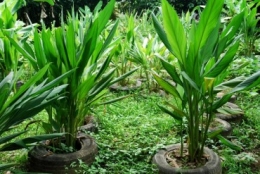

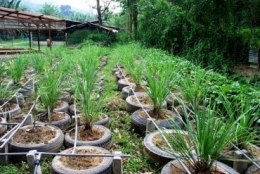
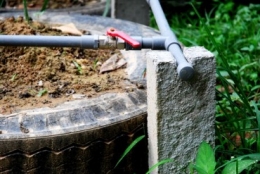
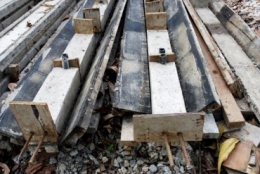
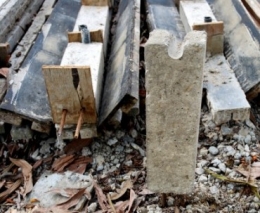
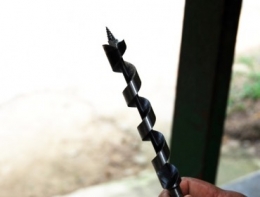

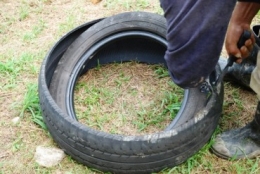
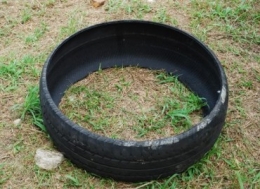
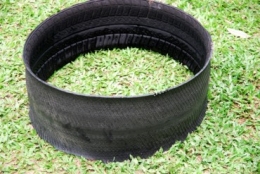
The comments are closed.